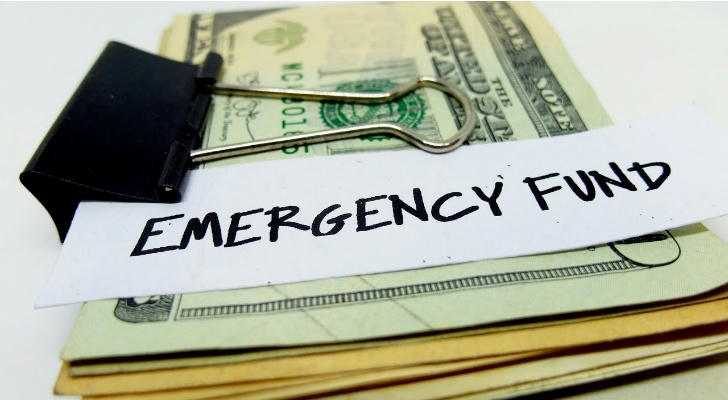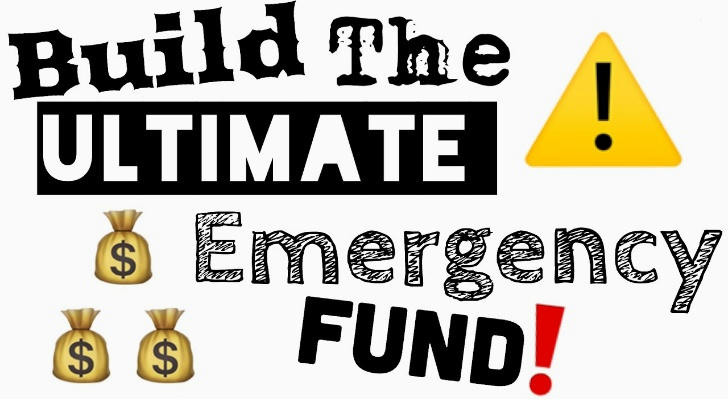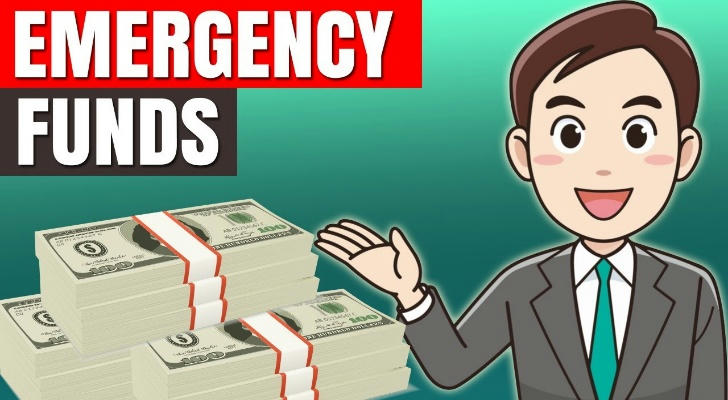Emergency Funds 101: Preparing for Life's Unpredictables
Living in the United States is like playing an adventure game full of surprises: you may be happily "upgrading" your life, and suddenly an "unexpected boss" jumps out - a flat tire, an emergency bill, or a sudden rent increase by the landlord! These unpredictable events are like "random traps" in the game, which may make you "lose blood" at any time. Don't be afraid! Emergency Fund is your "financial magic shield" that can help you resist the "magic attack" in life. This popular science article will take you into the wonderful world of emergency funds in the United States, and teach you how to prepare a "gold coin shield" for unpredictable things in an interesting way. The word count is more than 900 words, and you will be transformed into a "financial magician" after reading it!

What is an emergency fund? Your "gold coin storage room"
In the United States, emergency funds are cash specially prepared for emergencies, stored in a safe, easy-to-access but not casually spent account. Imagine it as a "life potion" in your game backpack, which can save your life at a critical moment! This money is not used to buy a new iPhone or go on vacation to Miami, but is designed for real emergencies, such as:
Medical accident: You fell and the emergency bill burned thousands of dollars like a "fireball" (the average emergency bill in the United States is about $1,400, KFF 2024 data).
Unemployment crisis: The company laid off employees, the salary was cut off, and the rent and grocery bills still had to be paid.
Emergency repair: The water heater broke down, and the repair cost was $500-2,000 (HomeAdvisor 2025 data), which is more expensive than killing monsters!
Interesting metaphor: Emergency funds are your "magic shield", which is usually hidden in the "gold storage room" and automatically appears when encountering "monsters" to protect your wallet! American financial experts (such as Dave Ramsey and Suze Orman) recommend that emergency funds should cover 3-6 months of living expenses, usually $5,000-20,000, depending on your cost of living.
Why do you need emergency funds? Don't let the "game fail"
You may think: "I have a credit card, why do I need emergency funds?" Haha, credit cards are like "borrowed magic scrolls", which are fun to use, but the interest rate when repaying is as high as a "curse"! In 2025, the average annual interest rate of credit cards in the United States will be as high as 20.78% (Bankrate), and a $2,000 bill may become $2,400 in a year. Emergency funds are "interest-free artifacts" that protect you from debt traps.
Key reasons:
Financial security: With emergency funds, you are like wearing "invincible armor" and can drink coffee calmly in the face of accidents.
Avoid high-interest debt: Don't rely on credit cards or payday loans (payday loans, with an annual interest rate of up to 400%!) to deal with crises.
Life buffer: When you lose your job or move, emergency funds give you "life extension time" so that you can calmly find a job or plan the next step.
Real case: Xiaomei lives in New York, with a monthly rent of $1,800. In 2023, she has no emergency funds. Her teeth urgently need root canal treatment, which costs $1,500. She can only use credit cards, and pays an extra $300 in interest in installments for a year. Her friend Xiaogang saved $6,000 in emergency funds. When he encountered similar problems, he paid the bill directly, without owing a penny, and his life was much easier!

How to build a "gold shield" in the United States? Five magic steps
Building emergency funds in the United States is like saving gold coins in a game. The key is strategy and persistence. The following five steps will help you get started quickly and transform into a "financial magician"!
Step 1: Calculate your "gold coin goal"
First calculate your monthly living expenses: rent, food, utilities, transportation, insurance, etc. Assuming you spend $2,500 per month (average single-person living expenses in the United States, BLS 2024), the goal is to save enough for 3-6 months of expenses ($7,500-15,000). Fun Tips: Think of your goal as the number of floors in a "magic tower". Climb one floor for every $1,000 you save. The goal is to reach the top!
Tips: Beginners should save $1,000 first (to deal with small crises), and then gradually increase to the level of 3-6 months. Singles have a lower goal ($5,000-10,000), and families need to have a higher goal ($15,000-25,000).
Step 2: Choose a "magic storage room"
In the United States, emergency funds are best kept in a High-Yield Savings Account, which is both safe and can earn interest. In 2025, accounts like Ally Bank (APY 4.2%), Marcus by Goldman Sachs (APY 4.3%) or SoFi (APY 4.6%) will far exceed traditional banks (such as Chase's 0.01%). Funny metaphor: High-yield savings accounts are like "magic forests" where your coins grow "interest fruits" and you can access them at any time!
Tips:
Avoid checking accounts (interest is almost zero).
Don't keep investment accounts (such as stocks, cryptocurrencies), as market fluctuations may make your "shield" disappear in an instant.
Money Market Accounts are also options, with slightly lower APYs but more flexibility (such as Capital One, APY 3.9%).
Step 3: Turn on "Automatic Magic Transfer"
Set up automatic transfers and transfer $50-200 from your checking account to your savings account every month, just like a "magic portal" to automatically collect gold coins. Real case: Xiaoming lives in Los Angeles, earning $4,000 a month, and automatically transfers $150 a month to a Discover Bank savings account (APY 4.25%). He saved $1,800 in a year and earned $70 in interest. It feels like picking up a "hidden treasure chest"!
Tips: Use the "Round-Up" function (Round-Up), such as Chime or Acorns, round up every time you spend, and deposit the change into your savings account, and accumulate a little bit!
Step 4: Protect your "magic shield"
Emergency funds are "sacred and inviolable"! Unless you encounter a real emergency (medical, unemployment, major repairs), don't use it to buy a PS5 or go to a music festival. Funny Tip: Think of your savings account as a "Dragon's Nest" where the coins can only be moved during a "Dragon-level crisis"!
Tips:
Choose a "no ATM card" savings account to make withdrawals more difficult.
Set up a separate account at the bank (such as Ally's "Savings Bucket" feature) to keep it separate from your daily expenses.
Step 5: Keep your "magic power up"
If you use your emergency fund (e.g., $1,000 for car repairs), replenish it as soon as possible! Reduce non-essential expenses (order Uber Eats less often) to restore your "shield" to full health. Funny metaphor: Using up your emergency fund is like "running out of magic points" and you have to quickly fill it up with a "blue bottle"!
Tips: Squeeze out an extra $50-100 in your monthly budget and prioritize filling up your emergency fund.
Common "magic traps" and American responses
There are several "traps" to watch out for when building an emergency fund in the United States:
**Trap 1: What if you don't have money to save? ** Start small! Save $10 a week and you’ll have $520 in a year. Try the “52-week challenge”: save $1 in the first week, $2 in the second week, and $1,378 at the end of the year! The average American makes $4,200 a month (BLS 2024), so saving 5% ($210) is a lot.
Trap 2: Saving in the wrong place. Don’t put your emergency fund in stocks or Bitcoin. With the crypto market crashing 50% in 2022 (CoinMarketCap), your “shield” could be wiped out. Choose a safe savings account or money market account.
Trap 3: Forget to update. U.S. interest rates fluctuate greatly. Check your account APY every year with Bankrate.com or NerdWallet.com to make sure your “coins” are in a high-yield account.
Trap 4: Tax misunderstanding. Interest on savings accounts is taxable (IRS 1099-INT form), but small amounts (e.g. $200 in interest on $5,000) usually have little impact, so consult an accountant in advance.
Real case: Amy's "Shield Counterattack"
Amy lives in Chicago, with a monthly salary of $3,500 and living expenses of $2,300. In 2023, she had no emergency funds, and her air conditioner broke down, costing her $1,200, so she had to use a credit card, and the 20% interest rate made her pay back $1,400 in more than a year. Later, she opened a SoFi savings account (APY 4.6%), saving $200 a month, saving $1,200 in half a year, and earning $50 in interest. In 2024, her pet got sick, and she used her emergency funds to pay $800 in medical bills, leaving her debt-free, and took her dog to the park to "celebrate her recovery"! Amy said: "Emergency funds make me feel like I have an 'invincible halo', and I am no longer afraid of accidents!"

Summary: Let your "gold shield" shine in the United States
In the United States, emergency funds are your "ultimate equipment" for dealing with "random events" in life. Remember these key points:
Goal: Save 3-6 months of living expenses ($5,000-20,000), start with a small amount ($1,000).
Account: Choose a high-yield savings account (such as Ally, SoFi) to make your money "long interest".
Strategy: Automatically transfer, avoid spending, and top up regularly.
Mindset: Only use it for "dragon-level crises" such as medical care, unemployment, and repairs.
Want to take action now? Open Bankrate.com or NerdWallet.com, find a savings account with an APY of 4%+, and save your first "gold coins" today! "Monsters" are everywhere in life in the United States, but with emergency funds, you are the fearless "financial wizard"!
